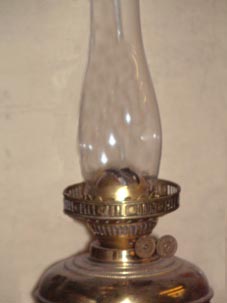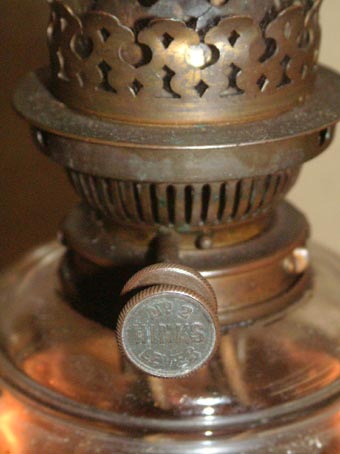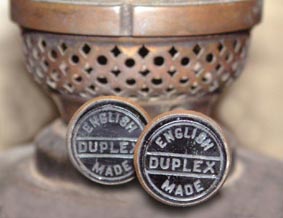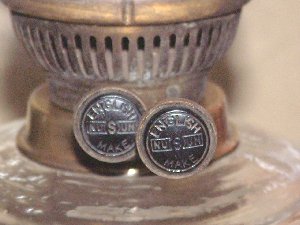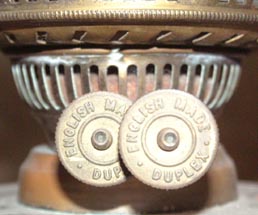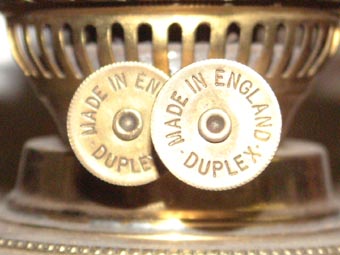|
The 'Duplex' burner |
|
|
Pictured below is
a picture of the common 'Duplex' burner. First developed in
England by Joseph Hinks in the late 1800's the burner has been
copied and produced all over the World. It is probably the most
common lamp burner found today though very early examples are
becoming rare. |
|
|
|
A common feature
throughout is the use of two wicks 1 1/16" wide parallel to
each-other. The two wicks at the correct distance apart give more
light than two separate wicks because the heat produced
vapourises the fuel more efficiently. A common mistake is to fit
1" wicks to these burners which is less efficient, however
some modern burners are so poorly manufactured that 1 1/16"
wicks will not fit properly. |
|
Pictured below is a selection of the wide range of winder knobs found on Duplex lamps. |
|
|
|
|
|
Early burner from Hinks, note the two winders are concentric on one shaft. |
Quality burner with knob inserts, proud to be 'English Made'..! |
|
|
|
|
This burner has inserts 'English make' with the name 'Newsun' across the centre |
Still a good quality burner but the winder knobs begin to show signs of cost cutting. These knobs have nice milling on the edge for the fingers to grip |
|
|
|
|
A burner from the 1960 period onwards, quality has gone further down. The markings are stamped and the edge of the knob is poorly milled and sharp. |
|
|
|
|
